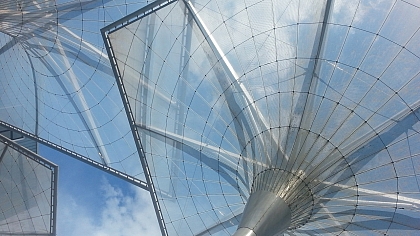
HVAC Systems and Indoor Plants: A Delicate Balance
Indoor plants can significantly enhance the aesthetics, air quality and so much beyond home improvements. As we are heading into the winter months, we are able to prioritise the health and wellness of our indoor plants to help our indoor garden to thrive. However, it’s crucial to consider the impact of your HVAC system on your plant’s health.
During the winter months, it’s too cold but with the heating on, it can also get too hot at times. The HVAC system comes to the rescue by harnessing the perfect and most comfortable living temperatures, but it’s artificial and with a lack of airflow throughout the home, it’s pumping cold and hot carbon dioxide all around the home and can be ever so drying to our throats.
When you wake up with a sore neck or a sore throat, you may wonder if you slept with the air conditioning on. Or did you sleep with the window open? It can leave the question of if it’s bad for our health for prolonged periods, then it’s more than possible that it’s bad for your plants but this is not to say that it can also positively impact your plant's health.
Why HVAC Systems Matter for Indoor Plants

Temperature
Indoor plants thrive within specific temperature ranges. HVAC systems can help maintain ideal temperatures but this also works out better for you in most cases. Especially during the extreme seasons, it’s ideal to keep them in a neutral state to encourage growth and prevent them from drying, which is always such a shame when it happens.
Humidity
Many plants require a certain level of humidity to flourish. HVAC systems can help regulate humidity levels, preventing your plants from becoming too dry or too wet. This makes it much easier when you have a watering schedule to prevent over and underwatering.
Air Quality
HVAC systems can filter out pollutants and allergens, creating a cleaner and healthier environment for your plants. But this needs to be monitored; it’s only healthy in moderation and not when it’s consistently blasting.
Airflow
Proper airflow is essential for happy and healthy plants and air conditioning pumps exist rather than fresh air throughout your home so avoid placing them directly close to the air conditioning unit.
Tips For Balancing HVAC Systems
Monitor the temperature and humidity of your rooms and throughout your home. For example, you wouldn’t want to place all your plants in rooms that are hot during the summer months and cold in the winter months. So place your plants strategically to encourage growth and they will live their best lives within your home. It’s also important you don’t overheat your home during the winter.
Consider different ways of hydrating your plants, such as misting or pouring jugs of water in the pot and hoping for the best isn’t the most practical way and can be damaging to your plant's health. There is research online that states that misting your plants once a week helps them stay moist during the drying months.
It’s not during the regular watering and house placements that you need to consider but the types of plants you are bringing into your home, so consider how often you will be home, your animals, where you are living and the maintenance you are willing to put in. You need to find compatible houseplants that complement all of these aspects; otherwise, it doesn’t matter how much care or attention you put into them; they will just eventually die.
Your HVAC system needs to have regular maintenance. You should get in contact with air conditioning Yorkshire Solutions, which can assist you with your repairs, maintenance, and installations to ensure that you are maintaining optimal humidity and airflow for your plants.
By understanding the relationship between HVAC systems and indoor plants, you can create a thriving indoor garden that enhances your home’s beauty and air quality.












